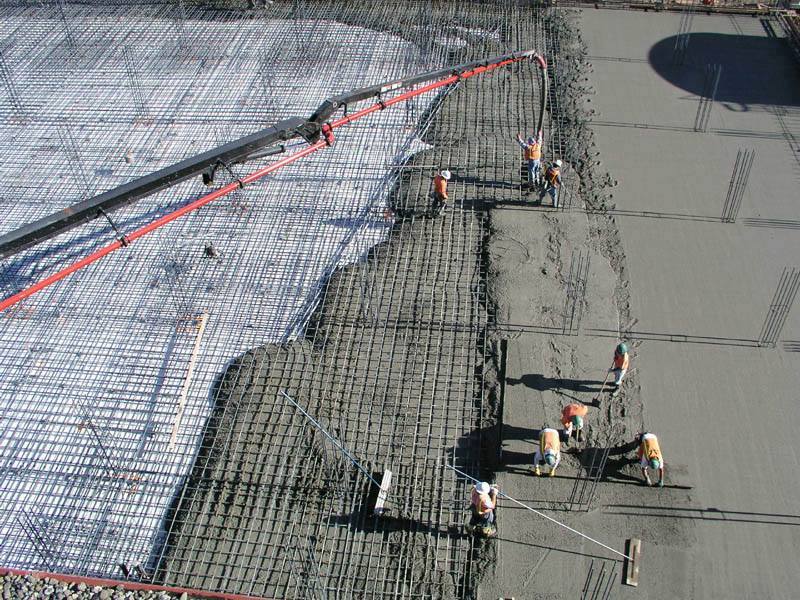Reinforced Concrete casting process Conditions need to be observed:
The format must be sprayed with water before pouring so that it does not absorb part of the concrete mix water. The cement reaction is affected and the concrete weakens.
Casting must be done in the shortest possible time after mixing the concrete because the lengthening of the concrete transfer time leads to the evaporation of a part of the mixing water, which affects the completion of the cement reaction and thus reduces the resistance of the concrete.
Concrete must not be poured (thrown) from a height greater than 1 meter so as not to cause granular separation (that is, large particles of aggregate separate from the concrete mixture and fall to the bottom while the cement paste rises to the top).
Concrete must be compacted during casting mechanically with vibrators to expel the air from inside the concrete and thus obtain concrete with fewer voids and less permeability and more bearing to weather factors and high resistance. And good blood pressure also enables us to use a small (m / h) ratio, and this – as is known – gives stronger concrete.
In the case of pouring using pumps of Reinforced Concrete casting process, the mixing water should not be increased to obtain soft concrete that facilitates its movement within the pump pipes, because the increase in water damages the strength of concrete.
Soft concrete can be obtained by providing it with additives during mixing that gives it the required plasticity without affecting its strength. It is also necessary to take care of the cleanliness of the pumps after each pouring process, to facilitate the work the next time.
When pouring on old concrete, the surface of the old concrete must be clean, rough, and moistened with water before pouring new concrete on it. Chemicals such as epoxy can be used to help bond the new concrete with the old.
The places for the casting stops must be chosen carefully so that the concrete parts of the installations are not affected and to ensure their safety, we must not, for example, stand in the middle of the concrete slabs of the ceilings or the middle of the carapace. ) in the base of the beams and ceiling tiles, and this is more correct from a design point of view.
Source: wikipedia.org/wiki/Reinforced_concrete
Read More: buildineg.com/public/blog/what-is-a-concrete-jacketing-of-column/

